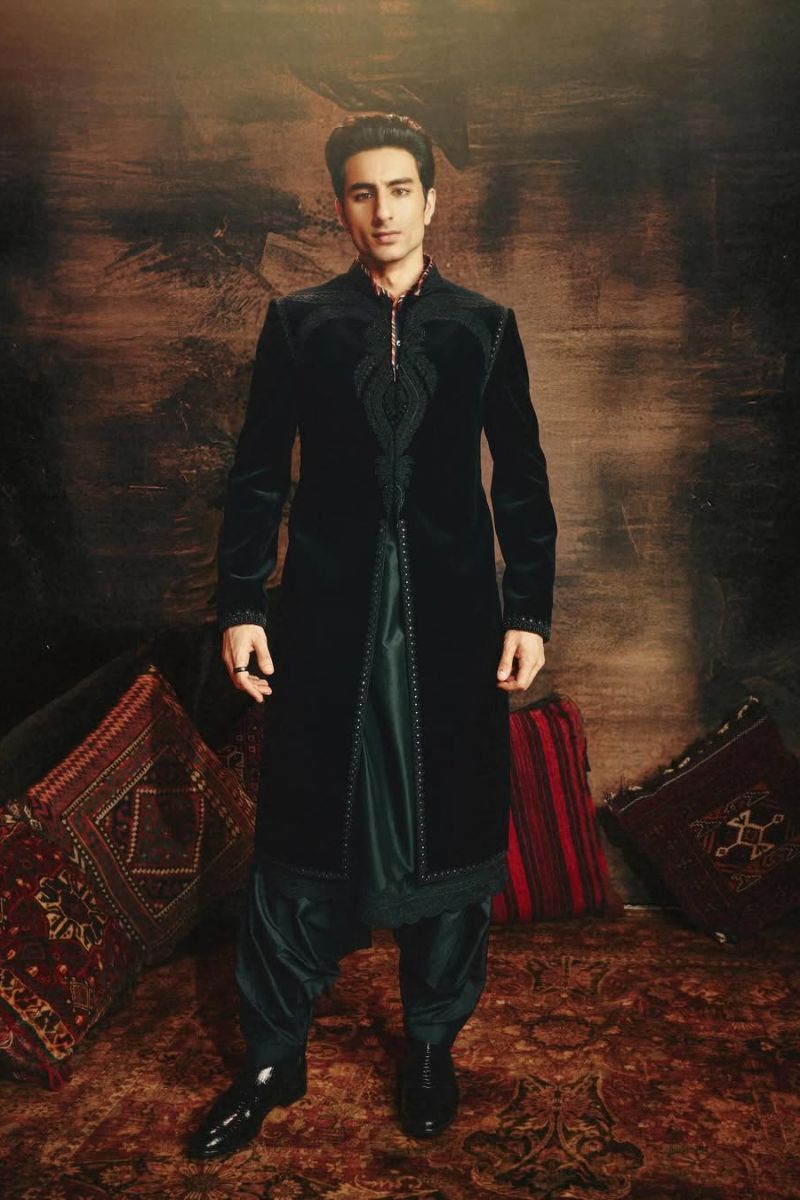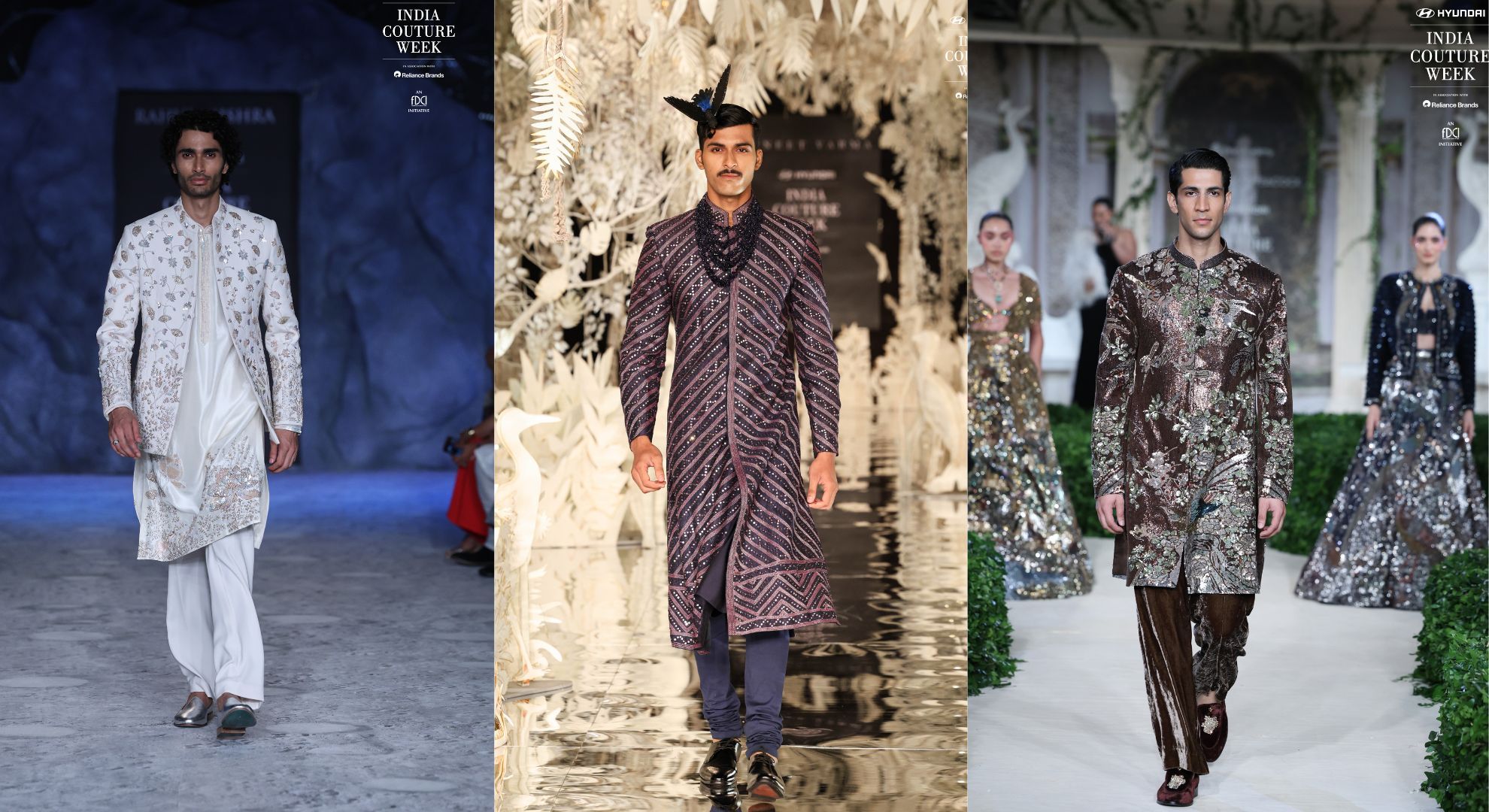For too long, the groom’s outfit has been an afterthought—beige, predictable, and built to blend into someone else’s spotlight. But at India Couture Week 2025, the menswear finally stepped forward. What we saw wasn’t rebellion, but refinement. Confident silhouettes, layered meaning, and a quiet shift from tradition as performance to style with intention. These weren’t costumes. They were choices. And they’re redefining what it means to dress like the groom.
Micro Florals and Nature-Inspired Embroidery
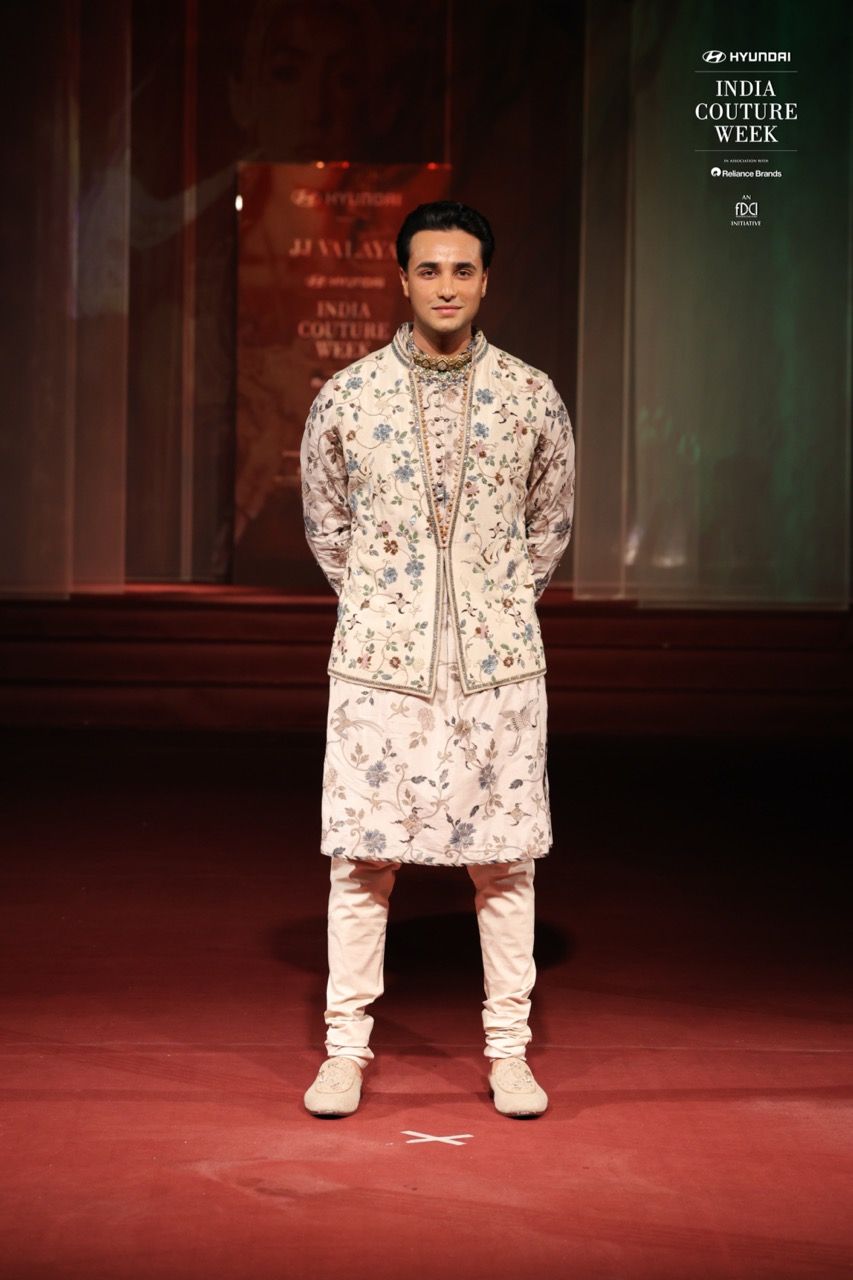
There was a notable shift towards quiet detail, particularly in the work of JJ Valaya and Aisha Rao. Both designers leaned into flora and nature as an organising motif. Valaya’s intricately embroidered ivory ensemble and Rao’s pastel-toned jacket didn’t just reference the natural world; they constructed entire visual landscapes through multicoloured threadwork.
The silhouette remained rooted in tradition: short jackets over kurtas and churidars. But the tone was contemporary, romantic without tipping into ornate. The result felt grounded in heritage but styled for modern wearability.
Why this matters: As grooms seek softer ways to interpret festive wear, nature-inspired motifs offer a middle ground. Expect to see a rise in micro florals, soft pastels, and storytelling via surface embellishment, especially for ceremonies held outdoors or during the day.
Animal Motifs and Maximalist Statements
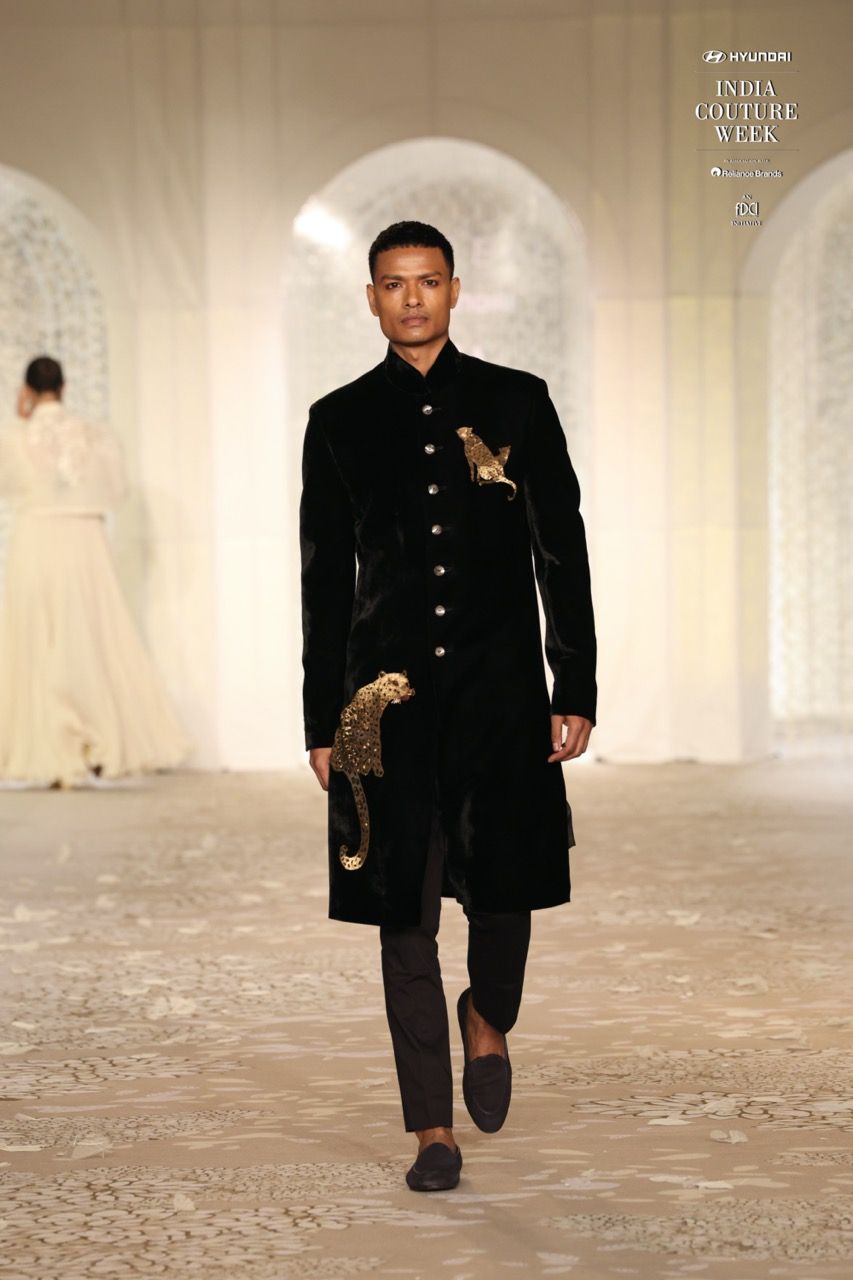
Rohit Bal's velvet sherwani, embroidered with sequined leopards, was among the most assertive looks of the season. The choice of animal iconography felt deliberate. It wasn’t about novelty. It was about symbolism—power, movement, intent.
The black and gold palette amplified its presence, making it ideal for evening wear. But more than that, it signalled a bolder, less restrained direction for grooms who want a visual signature.
Why this matters: Animal motifs bring a form of assertive masculinity into the groomwear vocabulary. They’ll likely appear in jackets, safas, or accessories where grooms want to build a clear focal point. Particularly relevant for engagement functions or cocktail evenings where traditional dress codes are more fluid.
Paisley Reimagined
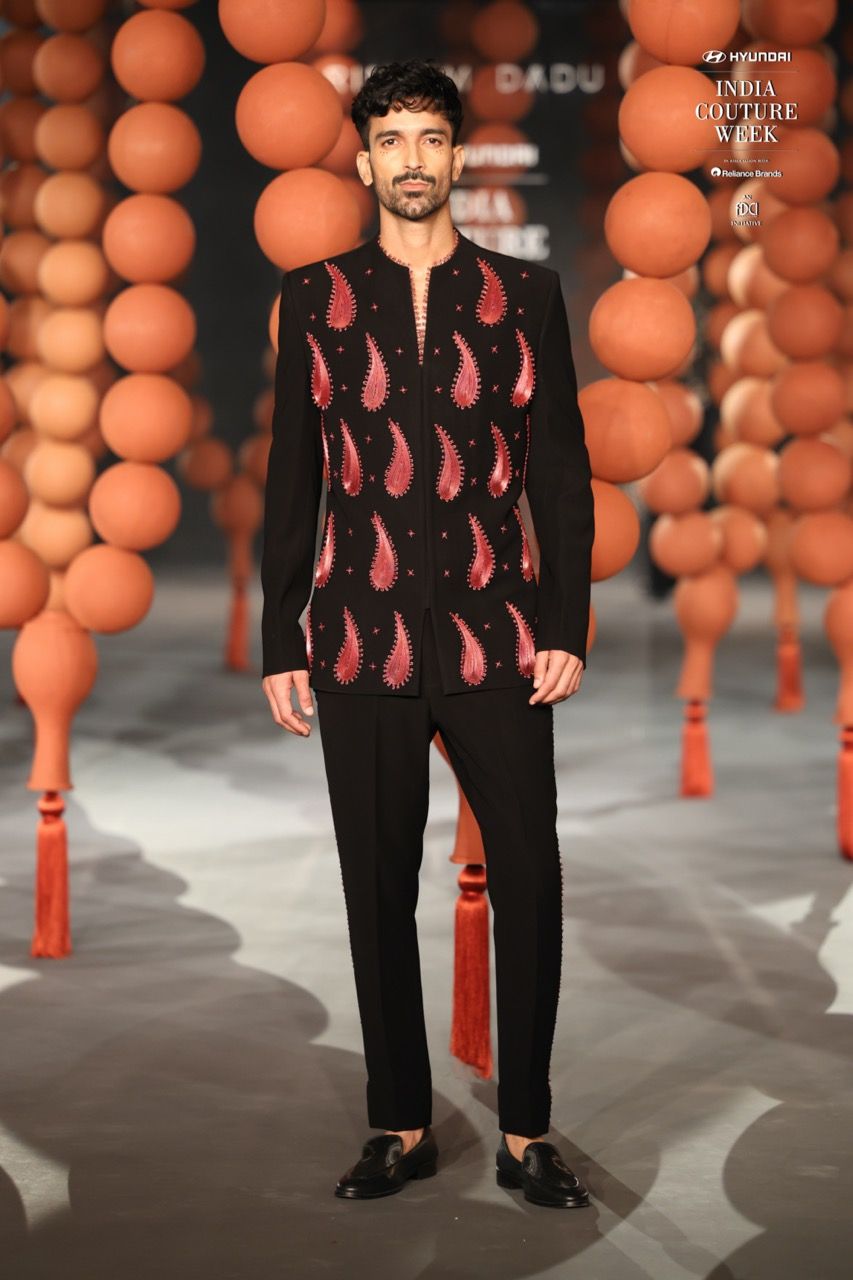
Paisley isn’t new to Indian occasionwear. But at Rimzim Dadu’s showing, it was treated less as a motif and more as a graphic device. Oversized, metallic, and styled on jet black, Dadu’s paisleys carried edge. They referenced the past without feeling nostalgic.
The silhouette itself was modern and minimal, allowing the motif to take centre stage. Think slick tailoring, clean lines, and strategic use of shine.
Why this matters: Grooms who want heritage without excess will likely turn to motifs like paisley but seek out interpretations that feel graphic rather than decorative. Expect to see this play out in jackets and separates for cocktail nights or destination weddings.
Sculptural Tailoring and Retro-Futurism
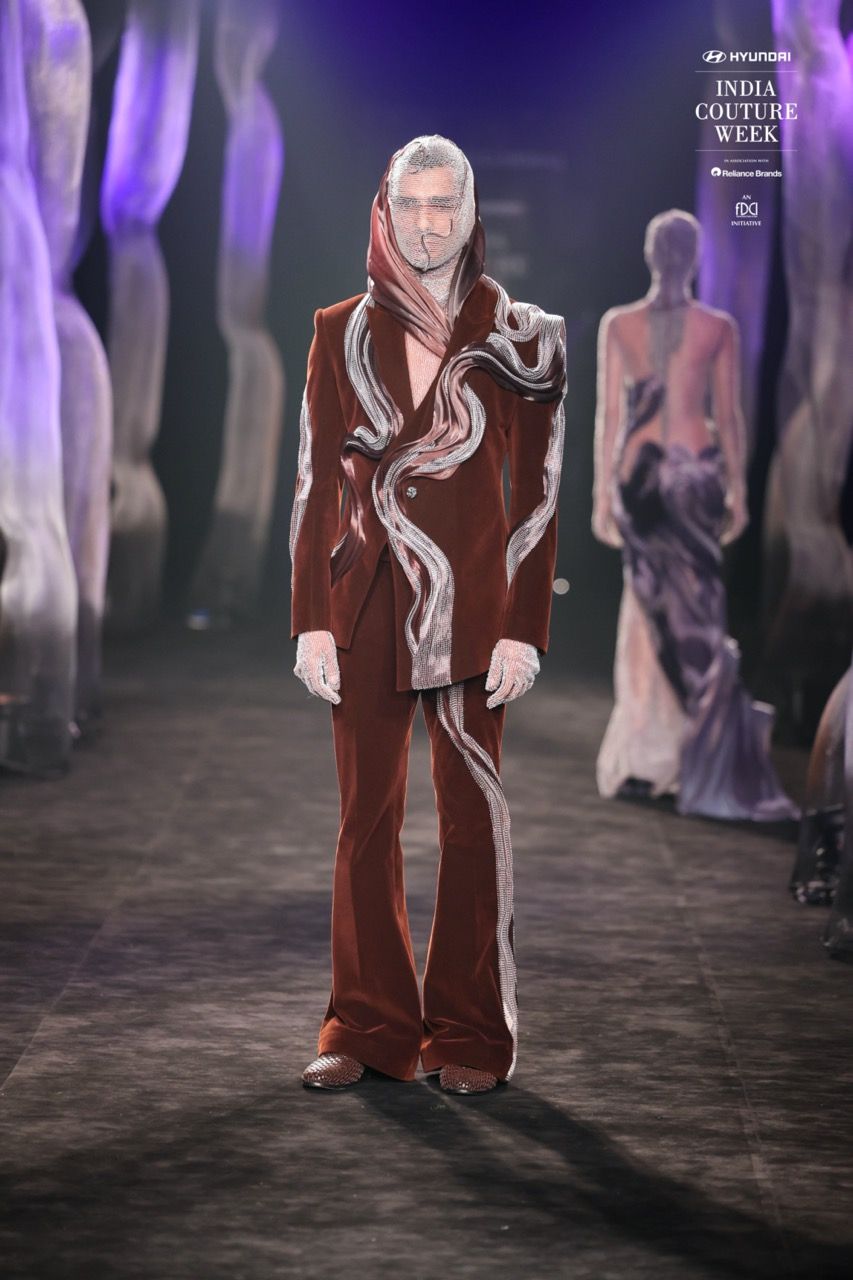
Some of the most directional looks on the runway moved beyond embroidery entirely, exploring volume, proportion, and surface as storytelling tools. A standout: the plush brown suit with flowing streams of crystal embellishment. Its exaggerated lapels and flared trousers referenced retro tailoring, while the ornamentation created a futuristic rhythm. These garments were styled minimally, letting the shape and detailing do the talking.
Why this matters: Grooms are looking to diversify their wardrobes beyond the sherwani. Suits like these, structured, styled, and embellished, will likely become go-tos for sangeets or receptions, especially for those who want drama without leaning on colour or print.
Layering as Technique
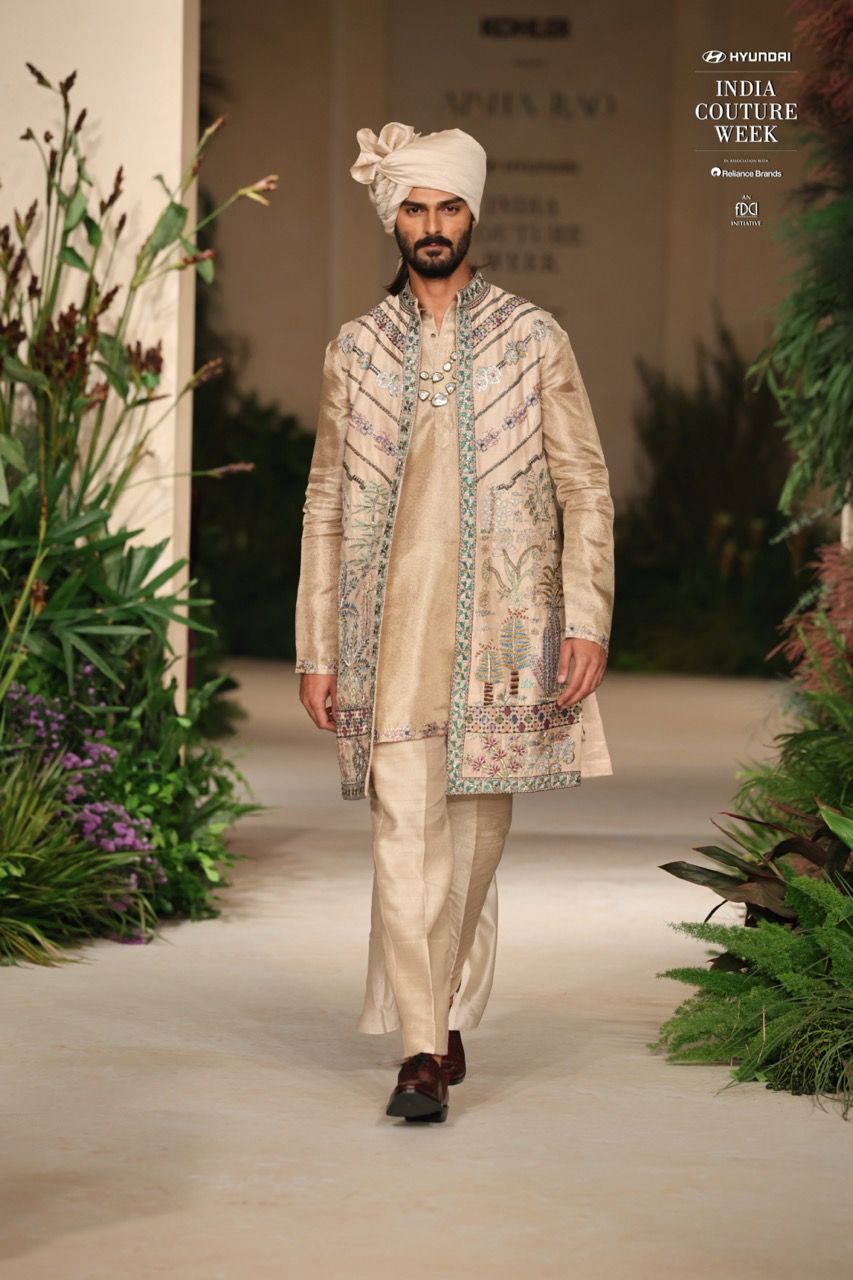
Aisha Rao and Jayanti Reddy both made a case for thoughtful layering. Longline jackets worn over embroidered kurtas, textiles that built on each other in tone and weight, and accessories that didn’t just add ornament but added dimension.
This was a shift away from the one-piece statement outfit. Instead, it was about building a look through layers, each contributing to the silhouette.
Why this matters: Layering is becoming an essential part of Indian menswear styling, not just a functional addition. Expect this to evolve into more curated combinations of kurta-jacket-pant sets, styled with optional overcoats or stoles, especially for winter weddings and evening functions.
Understated Opulence in Neutrals
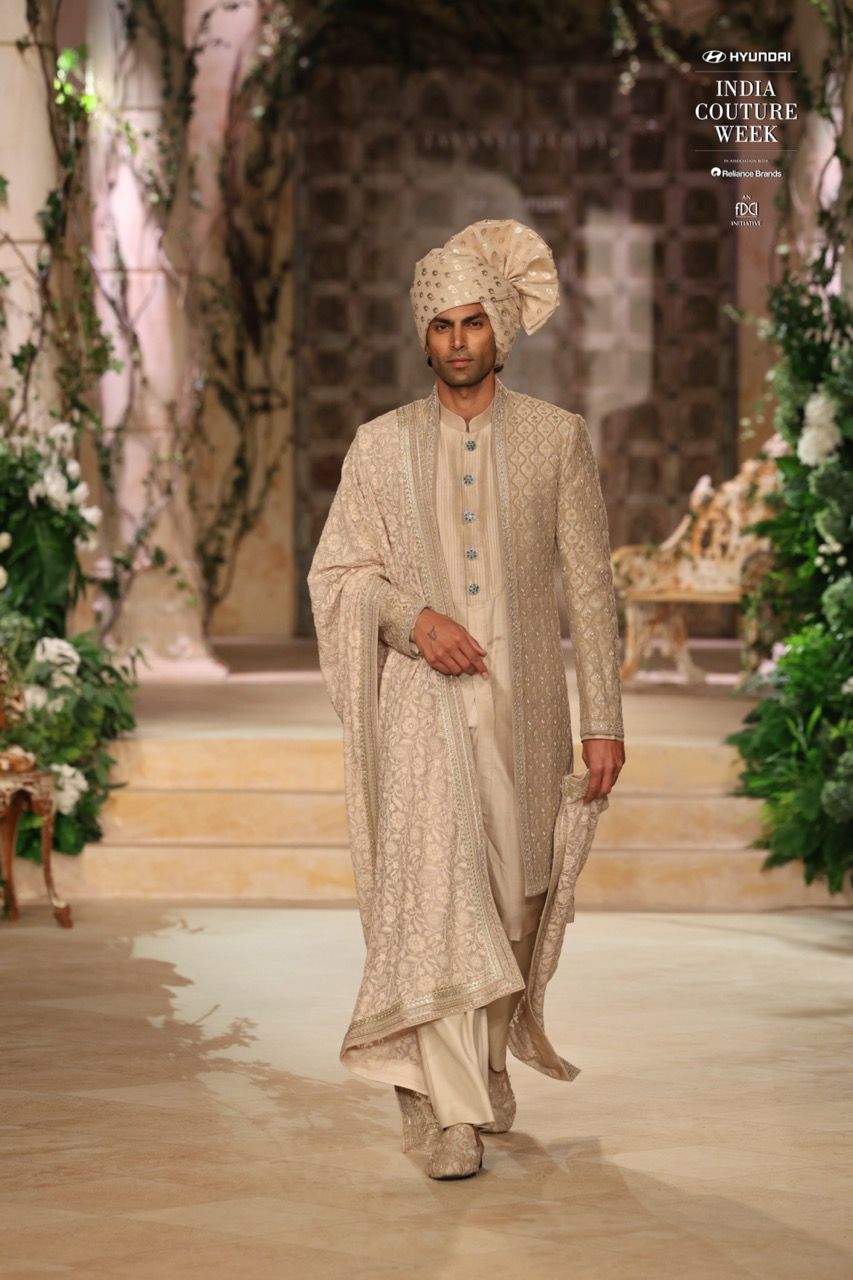
Jayanti Reddy’s ivory sherwani, heavily worked but subtly rendered, embodied a wider tonal shift. Designers across the board leaned into neutrals—ivory, beige, ecru—and matched them with tonal accessories like turbans and footwear.
Embroidery was there, but it didn’t dominate. Instead, the emphasis was on finesse. Pieces were finished with care, not cluttered with embellishment.
Why this matters: As weddings become more intimate and style-conscious, grooms are seeking outfits that feel ceremonial without being overbearing. Tone-on-tone dressing in muted palettes is likely to become standard for day weddings and rituals, especially among younger couples seeking visual coherence over contrast.
Jewellery as Narrative
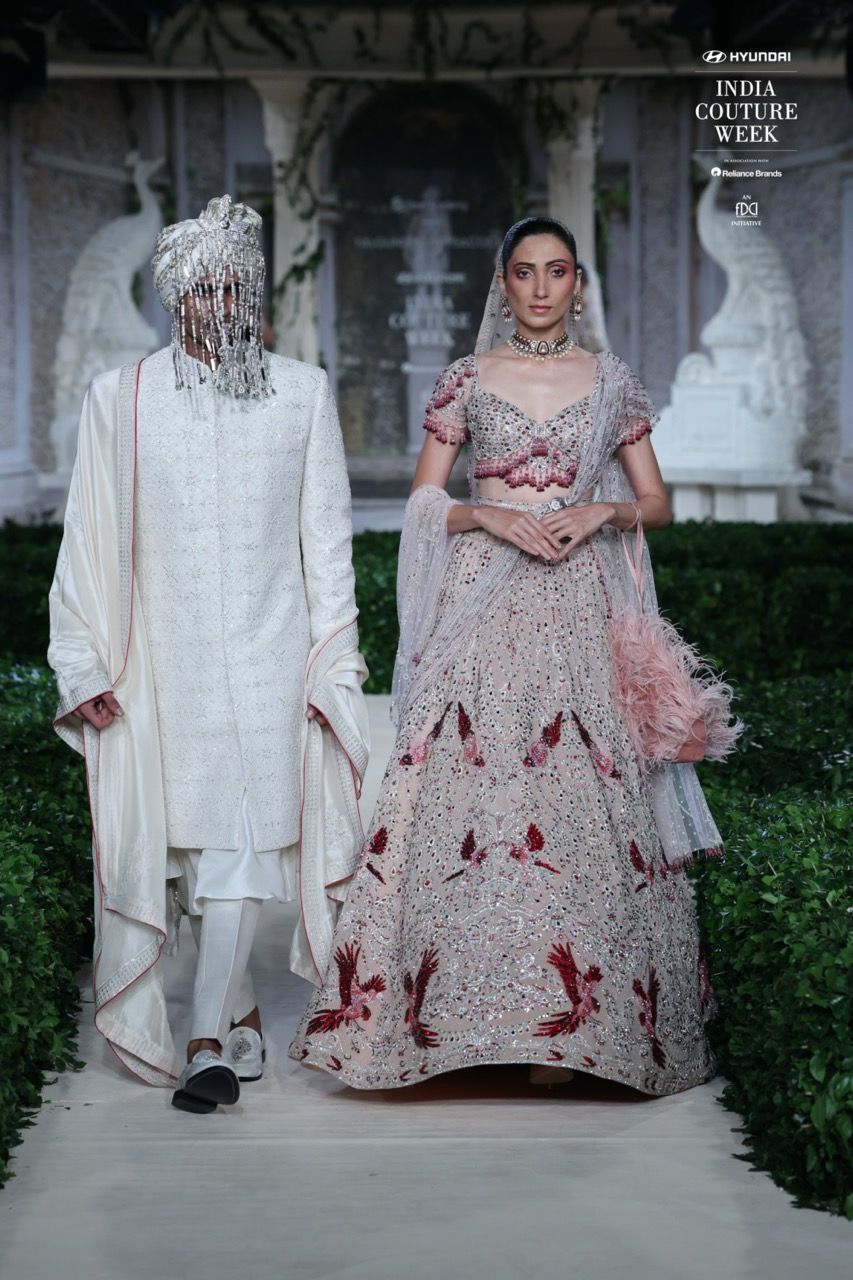
This season marked a shift in how men’s accessories were treated. Designers like JJ Valaya and Aisha Rao styled gemstone malas, brooches, kilangis, and turbans not as add-ons but as narrative tools. Each accessory carried intent, whether referencing lineage, locality, or function.
Shane Peacock, in particular, used jewellery to reframe the male silhouette entirely. The brand’s styling turned brooches, haathphools, and layered necklaces into focal points. These weren’t borrowed elements from the women’s lookbook. They were tailored for the groom.
Why this matters: Grooms are no longer outsourcing accessories as afterthoughts. We’ll likely see a rise in commissioned pieces and bespoke jewellery styling for men, especially for ceremonies where photography and legacy matter.
The Return of Black and Jewel Tones
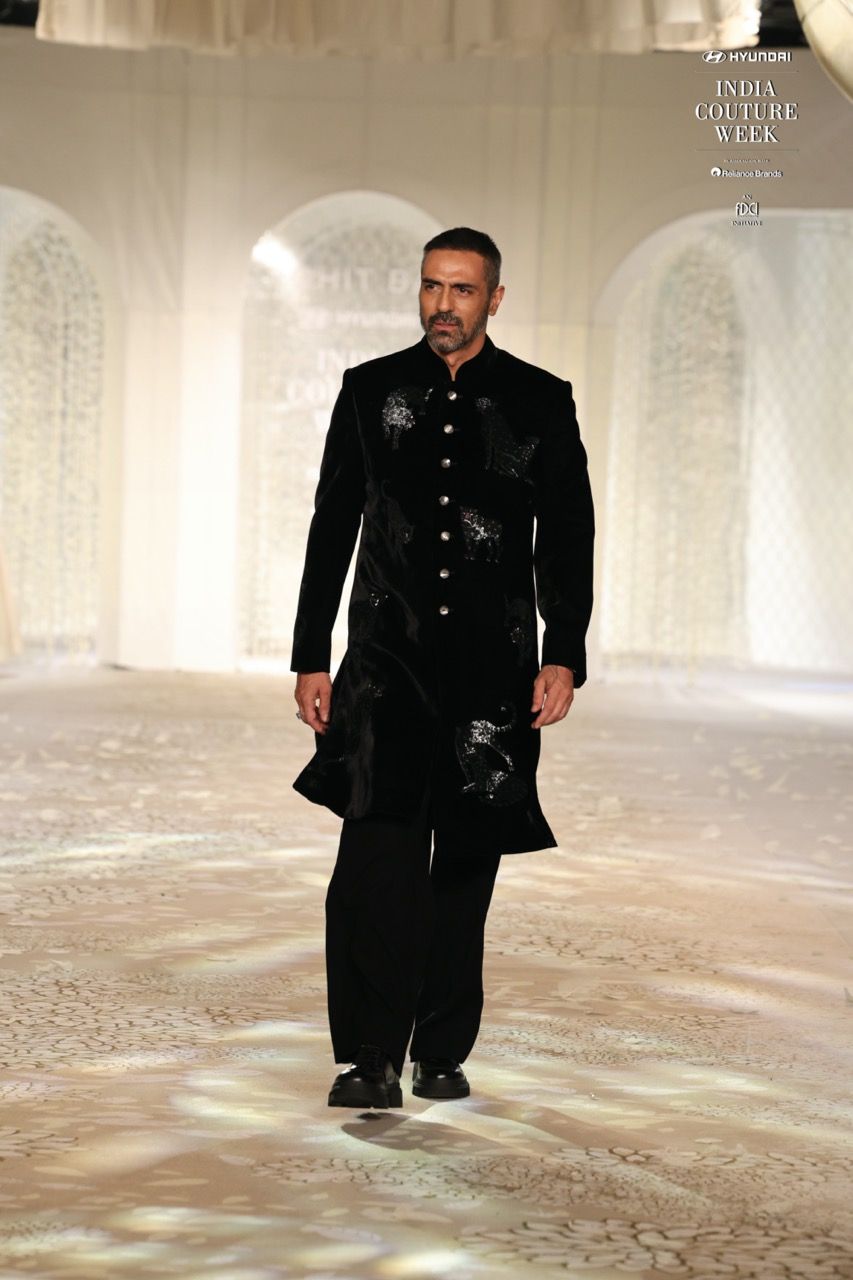
Ivory may have led for daytime dressing, but deeper tones dominated the evening. Rohit Bal’s black velvet and Rimzim Dadu’s metallic dark palettes stood out for their quiet intensity. There was also a return to jewel tones—deep browns, burgundy, and midnight blue—but without the usual embellishment overload.
Colour was used sparingly and with clear purpose. It set the mood rather than demanding attention.
Why this matters: Jewel tones are likely to become staples for non-ceremonial events like sangeets, cocktails, or receptions. They signal polish without being predictable and offer grooms a chance to anchor their look without competing with bridalwear.
Finishing Touches: Footwear, Buttons, and Surface Detail
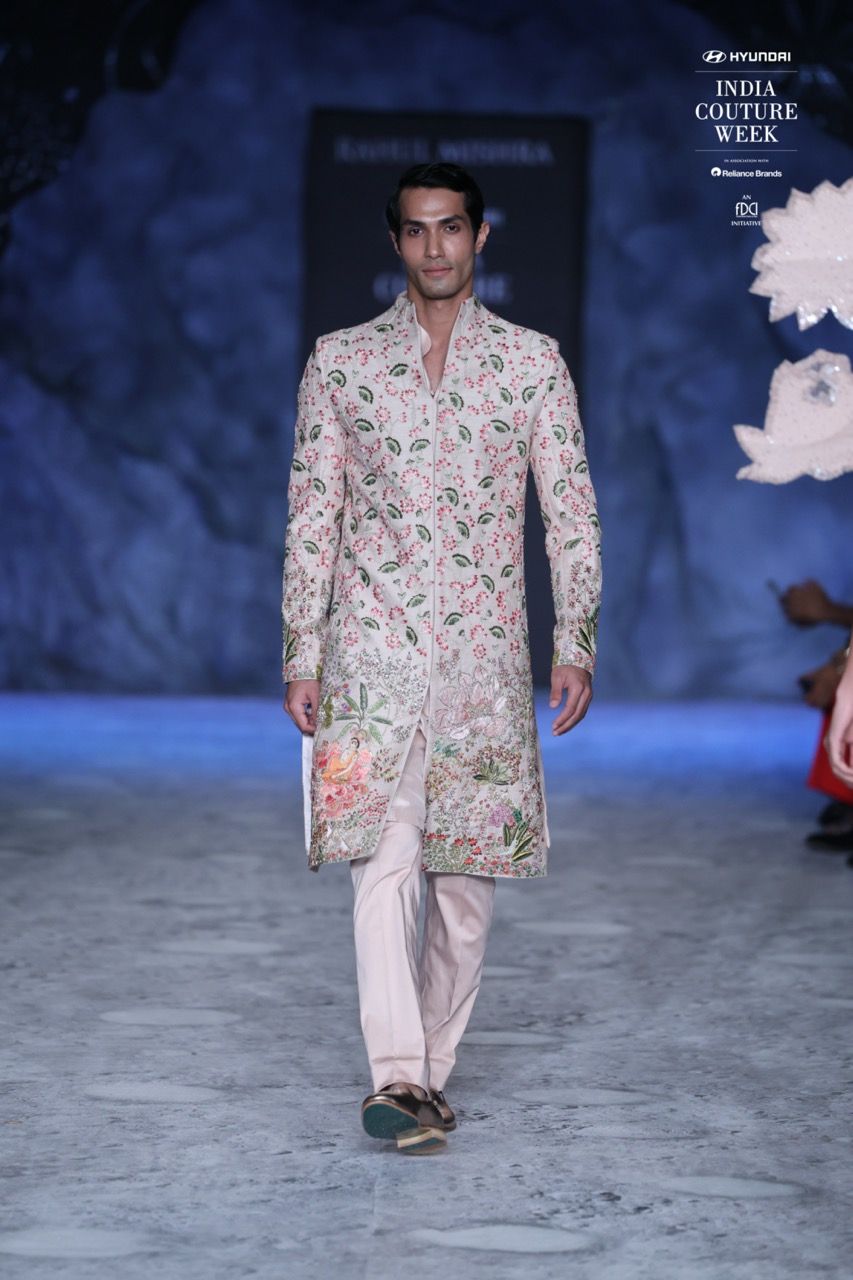
What stood out this season was how complete each look felt. Footwear was chosen with precision—embroidered juttis, velvet loafers, leather slip-ons. Buttons were given weight. Surfaces were textured to carry light differently under stage lighting.
These weren’t statement pieces on their own. But collectively, they built a finished look.
Why this matters: Details are no longer optional. Grooms are likely to pay closer attention to the cohesion of their outfit, from button design to shoe embroidery, especially in the age of high-resolution photography and stylists on call.
Indo-Western Hybrids
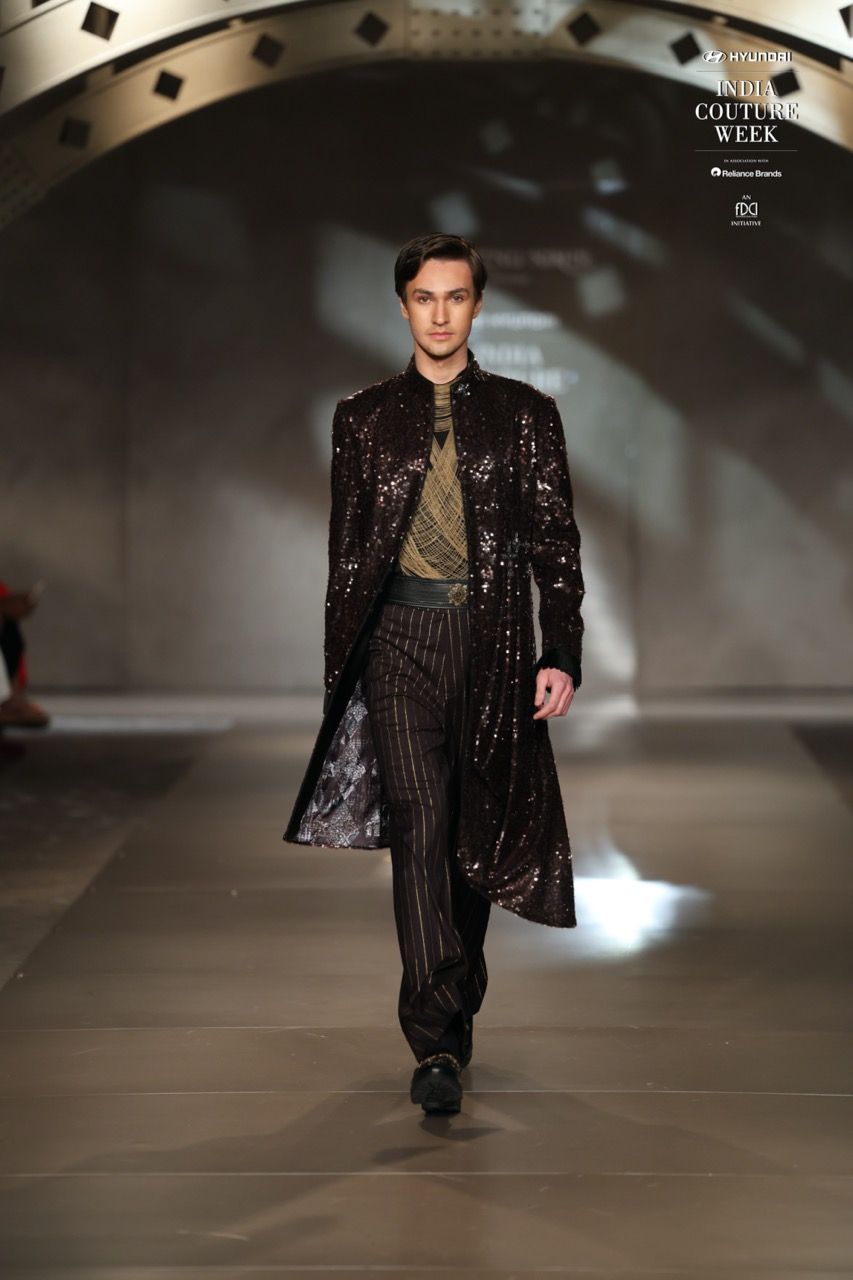
Shantnu & Nikhil offered some of the most seamless East meets West blends this season. Their trench coats, velvet bandhgalas, and double-breasted suiting felt globally literate but locally rooted. The mix of tailoring and textiles didn’t feel forced; it felt intentional.
The cuts were recognisably Western. The fabrics and embellishments weren’t. Together, they created a new category of festive dressing that didn’t rely on tradition but respected it.
Why this matters: As grooms look for versatility, Indo-Western options will continue to grow, especially for events where formalwear is expected but cultural markers are still important. These hybrids allow for fluidity without dilution.
The Bigger Shift
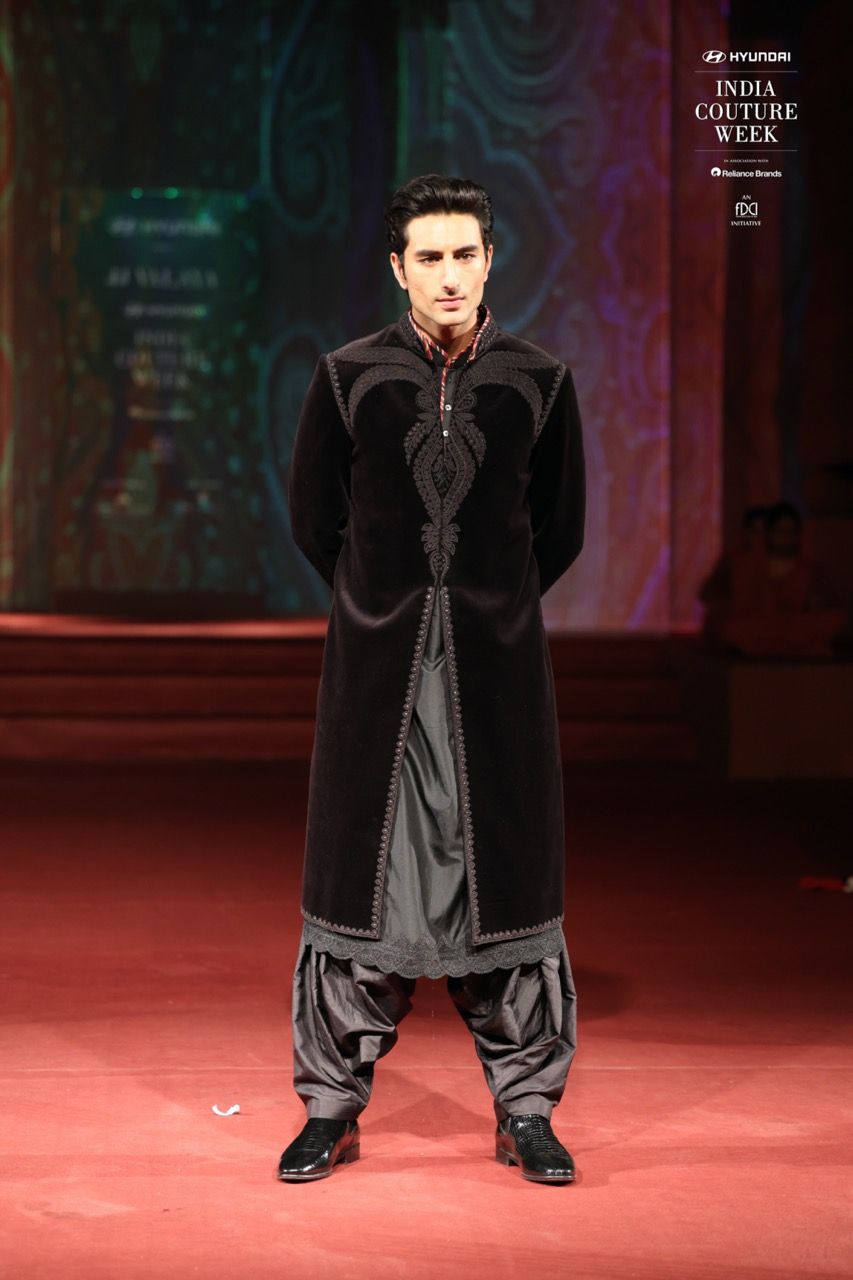
Menswear at India Couture Week 2025 was less about reinvention and more about refinement. Designers weren’t chasing novelty. They were building coherence. Whether it was through tailoring, embroidery, or accessory styling, the groom's wardrobe emerged as something thoughtful, specific, and increasingly self-contained.
The modern groom isn’t trying to outshine the bride. But he’s also not standing quietly next to her. He’s dressing with clarity, about craft, context, and presence.
